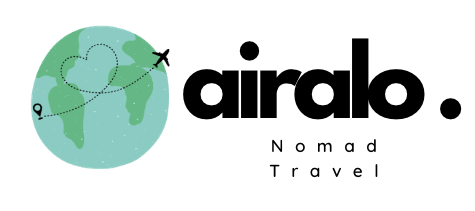
Canada is recognized as a livable country, with a high-quality education, healthcare, and social welfare system, a safe and stable social environment, and beautiful natural landscapes. Therefore, it has attracted many digital nomads to choose Canada. Additionally, Canada’s technology industry is thriving, with many provinces actively promoting technological innovation and entrepreneurial activities, providing numerous opportunities and support measures.
Now, let’s take a look at what details you need to know when applying for a digital nomad visa in Canada.
Benefits of the Digital Nomad Visa:
If you want to become a digital nomad in Canada, you don’t need a work permit. As of June 2023, Canada announced that digital nomads working for foreign companies can work in the country for up to six months and enter Canada through the same process as tourists. This means that as a visitor visa holder, digital nomads can work in Canada for up to six months and engage in remote work in tech positions. Digital nomads are defined as individuals who travel freely while working remotely using technology and the internet.
According to Canada’s Talent Strategy for Taxation, the IRCC Minister also mentioned Canada’s digital nomad program, aiming to promote Canada as a destination for digital nomads. Digital nomads are people who can work remotely from anywhere in the world. According to current Canadian immigration regulations, digital nomads only need visitor visa status and can reside in Canada for up to six months at a time while working remotely for foreign employers.
In the YouTube video “Digital Nomad Visa Canada Canada Visitor Visa to Work Permit Process Canada PR Dream Canada” by YouTuber Dream Canada, it mentioned:
“Now, coming to the benefits of the digital Nomad Visa that’ll make you want to apply for it right away. There’s no age limit, there’s no IELTS test required, there’s no CRS or point system to follow, there’s no ECA required. The processing time is just 28 days. There are no draws or waiting time for ITAs to worry about. You can be in Canada while searching for jobs and be able to attend in-person interviews, which will, in turn, increase your chances of securing a high-paying job. Last but not least, you can easily convert your digital Nomad visa to a work permit or even PR after securing your job in Canada.”
Details to Note:
- Processing Time for the Digital Nomad Visa: Zero to two months.
- Work Permit Requirement: Only a Visitor Visa is required, not a work permit. Digital nomads can work in Canada while holding a visitor visa. Each visit can last up to six months. If you’re a U.S. citizen or a U.S. permanent resident, you need to present your U.S. passport or green card to the Canada Border Services Agency. For individuals from other countries, you either need to apply for a visitor visa or, if you’re from a visa-exempt country, obtain an Electronic Travel Authorization (eTA).
Let’s look at more details to note. In the YouTube video “Digital Nomads NO WORK PERMIT Required Canada Immigration” by YouTuber Zeste Immigration, it mentioned:
“Choose this option if you work for an employer outside of Canada, can do your job remotely, and want to experience Canada. So technically, you’re working for a foreign employer, but you’re living in Canada just to experience Canada. However, here’s the good thing: in case these digital Nomads find a valid job offer in Canada, it would make them eligible to apply for a work permit based on that valid job offer. Now, if they’re planning for permanent residence in Canada, finding employment in Canada can actually help them a lot since they can claim Canadian work experience points after working in Canada on a valid work permit. Also, the majority of remote workers fall under STEM occupations, and hence they are quite likely to receive an invitation to apply for PR since Express Entry is now also targeting STEM occupations.”
In the YouTube video “Canada DIGITAL NOMAD VISITOR VISA Apply and Find jobs in Canada Immigration News Latest IRCC Updates” by YouTuber Sahil Sayal, it mentioned:
“But it is essentially, like I said, a visitor Visa only that will allow you to stay in Canada for up to 6 months. That will allow you to look for potential Canadian employers as well. So that means you can look for jobs in Canada, and then once you find yourself a job, follow the application for a work permit steps. For example, getting an LMIA or any sort of permit or any authorization to work in Canada, then you can convert your visitor Visa into a work permit for a Canadian employer.
Okay, so broadly, IRCC has clarified that the person or anybody who’s coming to Canada on this digital Nomad Visa or a visitor Visa can enter Canada and work remotely. And at the same time, can seek employment in Canada. However, if the intent to find jobs in Canada is declared at the border in front of the officer.
Or, you know, if the Declaration is given, by the person that he or she intends to find a job, then the person must be counseled that the person must start working or would be able to work only once they have attained a Canadian work permit. Otherwise, they are not allowed to work for any Canadian employer. Okay, so they must be approved for a work permit inside Canada. As a first part, you need to understand along with the application when they’re applying for their digital Nomad category of the visit status, the person must satisfy the officer that the person will depart from Canada or the person will leave from Canada or will leave Canada before the authorized period of his or her stay comes to an end. Although there are no additional documents per se that are, you know, guided by the IRCC overall, the person should provide enough documentation to justify that he or she is able to perform duties remotely for an employer or freelancer or whatever. So, a) the person should be able to justify that he or she is a digital Nomad, has no attachment to a workplace overseas. B) the person will be leaving Canada if he or she does not get any work permit here. So that means they will not be overstaying as long as they’re able to justify these two causes. The person is eligible to apply for an additional Nomad Visa of the category. Another thing to note here is that the family members do not get any status.
If you are here on a digital Nomad visitor status, that means, uh, there are no, by default, uh, you know, open work permits, study permits, or work permits. The family, however, can be your, you know, dependent applicant as a visitor in Canada only. So, say, for example, you are applying for your own digital Nomad category of the visitor, uh, visitor status or visitor Visa, then your family can accompany you as visitors only. But by default, there are no visas. On the other hand, if you apply for your own work permit based on any authorization obtained from an employer, then obviously your family can be a dependent applicant on that particular application. There is no bar or there is no limitation on that. Um, you know, until you get that work permit approved, you and your family members will continue to be here on a visitor status, just like visiting any country.“
In the YouTube video “Canada DIGITAL NOMAD Visa Requirements NEW PROGRAM IT workers” by YouTuber INGWE Canada, it mentioned:
“You’re applying on if you have previous refusals for Canadian visitor visas or permits, will this reduce your chances of a digital Nomad visa? Of course, it will reduce your chances. This will seriously impact any likelihood you have of a successful application with IRCC, and it all depends on the above criteria we just covered earlier in this video. If you’re on an H1B visa and still employed with your employer in the US and can work remotely, is it worth applying for this work remotely in Canada digital Nomad initiative? If you miss the deadline to apply for the H-1B open work permit initiative, yes, of course, if you meet the basic criteria and are still employed in the US, yes.“
Required Application:
Now let’s understand the required application documents and fees for applying as a digital nomad in Canada:
Application Fees: The application fee for the Digital Nomad Visa is only $100 USD, and the biometric fee is the same as any other Canadian visa, currently $85 USD.
Required Documents:
- Six months of bank statements to prove the source of funds
- A work invitation letter and pay stubs from your current company if you are working remotely
- Canadian-style resume and cover letter
- Employment verification letter from previous employers
- Lease agreement or other accommodation proof during your stay in Canada
Tips: Make sure to include relevant keywords in your documents based on your work background and the position you are applying for. If the correct keywords are not included, your documents may be discarded by profile screening software used by hiring managers and HR teams.
To apply for this visa, follow these steps:
- Check your eligibility.
- Prepare all the required documents.
- Apply online for your Digital Nomad Visa (the application page link is provided in the description box).
- Submit all the documents during the application process and pay the $100 application fee.
- Receive the visa decision within 28 days and fly to Canada.
In conclusion, I hope this article can help all digital nomads who wish to obtain the Digital Nomad Visa in Canada! If you have any further questions or need assistance, feel free to comment or contact us! Thank you.
This article references the following video sources:
https://www.youtube.com/watch?v=-Ft_HXXO9FM
https://www.youtube.com/watch?v=y-UVOZLPv2c
https://www.youtube.com/watch?v=L3dTjC6GCLU
https://www.youtube.com/watch?v=KGeicGa5en8
If you have more questions or need assistance with tax-related matters, feel free to leave a message or add our official WeChat account to access a range of professional services, including tax planning, consulting, immigration, and digital nomad assistance.






I’m not that much of a internet reader to be honest but your sityes really
nice, keep it up! I’ll go ahead and bookmadk your site too come back later on. Cheers https://www.waste-ndc.pro/community/profile/tressa79906983/
It’s going to be ending of mine day, however before end I am reading this impressive paragraph to increase my
experience.
You need to take part in a contest for one of the best blogs online.
I most certainly will highly recommend this site!
I have learn a few excellent stuff here. Definitely value bookmarking
for revisiting. I wonder how a lot attempt you place to make any such great informative website.
I pay a visit everyday a few web pages and sites to read content, but this webpage presents quality
based articles.
Pretty! This was a really wonderful post.
Thank you for providing this information.